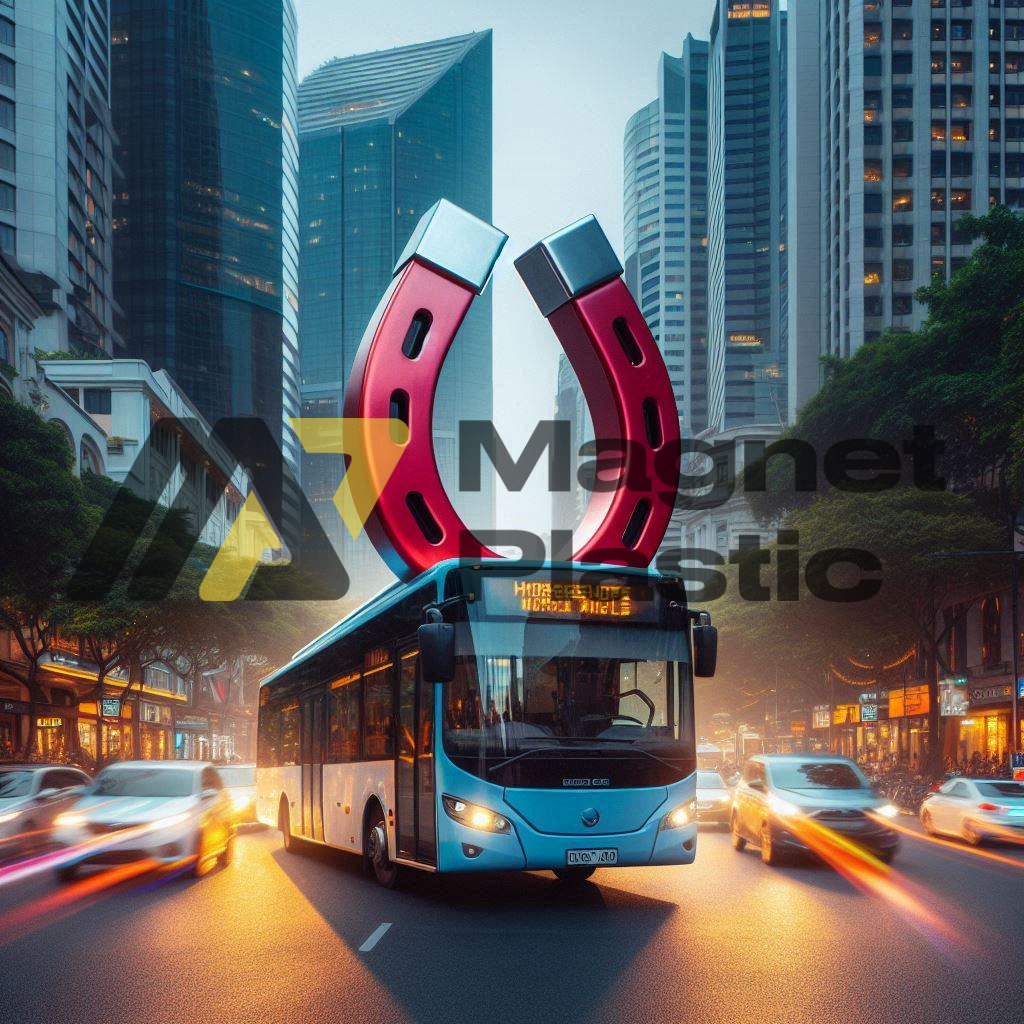Magnets in Public Transportation
Public transportation has advanced significantly over the past few decades, and one of the most exciting innovations is the use of magnets. From magnetic levitation trains to braking and safety systems, magnets are revolutionizing the efficiency, safety, and sustainability of public transport. This article examines how magnets are used in public transportation, their advantages, and future innovations in this field.
Magnetic Levitation Trains (Maglev)
One of the most notable applications of magnets in public transportation is magnetic levitation trains, or maglev. These trains use powerful magnets to levitate and move along a track, eliminating direct contact with the rails and reducing friction. This technology enables speeds much greater than those of traditional trains.
Speed and Energy Efficiency:
Maglev trains can exceed speeds of 600 km/h, significantly reducing travel times compared to conventional trains and planes on short routes.
By eliminating mechanical friction, not only is speed increased, but energy efficiency is also improved, as less energy is required to maintain speed and motion.
Reduced Maintenance:
The absence of physical contact between the train and the track reduces wear and tear on mechanical components, thereby decreasing maintenance costs and frequency.
Magnetic Braking Systems
Magnets also play a crucial role in braking systems for trains and other public transportation vehicles. Magnetic brakes, or eddy current brakes, use magnetic fields to create resistance and slow down the vehicle smoothly and efficiently.
Enhanced Safety and Control:
Magnetic brakes allow for more precise control over deceleration, increasing safety by providing quick and controlled responses in emergency situations.
These braking systems are less prone to mechanical failures and have a longer lifespan due to the lack of physical friction.
Noise and Vibration Reduction:
By eliminating physical contact between braking surfaces, noise and vibrations are significantly reduced, improving passenger comfort and decreasing noise pollution.
Safety and Monitoring Systems
Magnets are also utilized in various safety and monitoring systems in public transportation. This includes magnetic sensors for monitoring train component conditions and automatic door closing systems that use magnets to ensure safe and reliable operation.
Condition Sensors:
Magnetic sensors can detect wear on components, track alignment, and other critical variables, sending early alerts for preventive maintenance.
This helps prevent unexpected failures and enhances the overall safety of the transportation system.
Automatic Door Systems:
Magnets ensure that doors close properly and remain shut during train movement, improving passenger safety.
Future Innovations
The use of magnets in public transportation continues to evolve with ongoing research and development. Future innovations may include:
Advanced Magnetic Materials:
The development of stronger and lighter magnetic materials could lead to even faster and more efficient maglev trains.
These materials could also enhance the durability and performance of magnetic braking systems.
Renewable Energies:
Magnet-based trains and transportation systems could be powered by renewable energy sources such as solar and wind, making public transportation even more sustainable.
Conclusion
The use of magnets in public transportation is transforming how we travel. From the high speed and efficiency of maglev trains to the safety and control of magnetic braking systems, magnets offer significant benefits. As technology continues to advance, we are likely to see more innovative applications of magnets in public transportation, improving sustainability, efficiency, and safety in transportation systems worldwide.
